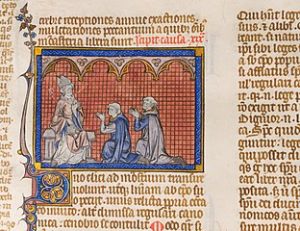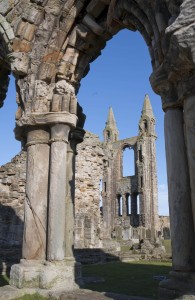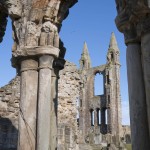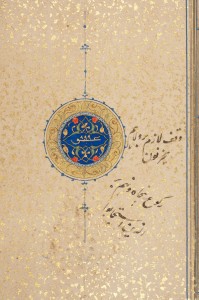Monasteries in Competition: Manuscript Production of Delft in the Late Middle Ages
Funded by: Netherlands Institute for Advanced Study
Project partners: Kathryn M. Rudy (PI), Gerrit Verhoeven (Delft) 
This will be the first comprehensive study of the 150+ manuscripts from Delft, which were overwhelmingly made by women in the convent of St Agnes and several neighbouring convents. It will investigate the relative value of men’s and women’s work in the late middle ages, particularly the relationship between self-trained nuns’ work and professional (male) work, and the role of manuscripts in branding monastic corporations.
Civil Law, Common Law, Customary Law
John Hudson runs a European Research Council ‘Advanced Grant’ a project entitled ‘Civil Law, Common Law, Customary Law: Consonance, Divergence and Transformation in
Western Europe from the late eleventh to the thirteenth centuries’.

The project explores the highly significant division in present-day Europe between two types of legal systems: the Continental, with foundations in Civil Law (law with an ultimately Roman law basis), and English Common Law. Both trace their history back to the twelfth century, and the project re-evaluates this vital period. The project employs four post-doctoral fellows: Will Eves; Andrew Cecchinato; Attilio Stella; and Sarah White. Also crucially involved is Professor Emanuele Conte of the University of Roma Tre. Two PhD students are soon to be appointed.
http://clicme.wp.st-andrews.ac.uk/
Mediaeval St Andrews
Mediaeval St Andrews began as a team-taught honours module offered in the School of History and has evolved into a cross-faculty collaborative project. Bringing together a range of projects across the University, our principal purpose is to collect, research, teach and share knowledge about St Andrews up to the Reformation. In 2014 the Mediaeval St Andrews mobile app was developed to enhance knowledge of the surviving built heritage, material culture and texts, as well as creating a digital environment in which reconstructions of long gone parts of the town could be embedded.
SAIMS staff involved in the Mediaeval St Andrews project include Professor Michael Brown (History), Professor Richard Fawcett (Art History), Dr Rachel Hart (University Library Special Collections), Dr Julian Luxford (Art History), Dr Christine McGladdery (History), Dr Norman Reid (Institute of Scottish Historical Research), Dr Katie Stevenson (History), Dr Rebecca Sweetman (Classics), and Dr Alex Woolf (History). The project benefits from collaboration with the Institute of Scottish Historical Research, the School of Computer Science, the Museum of the University of St Andrews and St Andrews University Library Special Collections.
http://medsta.wp.st-andrews.ac.uk/
Power and Institutions in Medieval Islam and Christendom
Funded by: Marie Curie Actions/ EU
Academic Partners: Dr Ana Rodriguez (CCHS-CSIC – Co-ordinator); Professor John Hudson (St Andrews); Dr Emanuele Conte (Roma Tre); Dr Caroline Humfress (Birkbeck); Sandro Carocci (Roma Tor Vergata); Professor Gadi Algazi (Tel Aviv); Professor Michel Kaplan (Paris I – Sorbonne); Professor Hugh Kennedy (SOAS).
PIMIC is a four-year collaborative project by a team of western medievalists, Arabists and Byzantinists – eight partners from prestigious academic institutions and two private sector companies. PIMIC will coordinate scholarly work at pre- and post-doctoral levels, addressing particular questions from different perspectives, but integrated within a common and ambitious research programme on a vital historical question: ‘why did certain sorts of institutionalisation and institutional continuity come to characterise government and society in Christendom by the later Middle Ages, but not the Islamic world, whereas the reverse might have been predicted on the basis of the early medieval situation?’ In addressing this question, the PIMIC ITN aims to produce a number of interpretative answers stressing the fact that even though the whole Mediterranean basin shared a common classical legacy, institutions acquired distinctive configurations in different regions and periods.
Religion and Public Life in Late Mediaeval Italy
Funded by: AHRC
Project Leader: Professor Frances Andrews
This AHRC funded project, led by Professor Frances Andrews with the assistance of Dr Agata Pincelli, documented the phenomenon of communal office-holding by men vowed to the religious life as a means to illuminate relations between secular and religious communities, the attitudes of elites and the ways in which they negotiated power.
A Corpus of Scottish Medieval Parish Churches
Funded by: AHRC
Project Leader: Professor Richard Fawcett (St Andrews)
Co-investigators: Dr Julian Luxford (St Andrews) and Professor Richard Oram (Stirling).

It is widely assumed that the loss of medieval ecclesiastical architecture since the Reformation has been so great that insufficient survives for a detailed understanding of the pre-Reformation Scottish parish church. It is certainly true that relatively few parish churches still in use are manifestly of predominantly medieval date. Nevertheless, it is becoming increasingly clear that, despite the combined impacts of iconoclasm and some restructuring of the parochial network, a majority of parish churches survived the Reformation, as much for economic reasons any as for any other cause.

